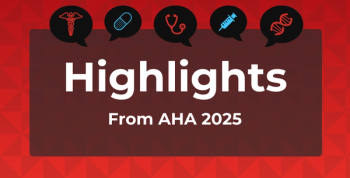
Review Analyzes Evidence Base for Multidrug Approach in PAH
A review published earlier this year examines the rationale and evidence for using a multidrug approach in pulmonary arterial hypertension (PAH).
A new
There are currently 14 approved therapies for the treatment of PAH, all of which target nitric oxide signaling (soluble guanylyl cyclase stimulator and phosphodiesterase type-V inhibitor [PDE-Vi] classes), the endothelin receptor axis (selective ETA and non-selective ETA/B antagonists), and the prostacyclin pathways (prostaglandin-I2 replacement or counter-receptor agonism). When it comes to multidrug treatment in PAH using the 14 available therapies, they are either used sequentially or combined upfront.
These therapies, along with various others currently being investigated in clinical trials, are a result of more than 2 decades’ worth of data. In addition to leading to FDA approvals, some data suggest that PAH now has more favorable outcomes compared with other, more common cardiovascular disorders, such as forms of left heart failure.
The rationale for using a multidrug approach in PAH stems from the multi-drug approach used in other cardiovascular disorders, according to the researcher, who explained, “A strong precedent exists in support of diversifying drug therapy to manage a wide spectrum of diseases, including highly prevalent cardiopulmonary disorders such as systemic hypertension, atrial fibrillation, myocardial infarction and others.”
The evidence base for multidrug use in PAH began in 2004 when researchers completed the first double-blind, placebo-controlled trial assessing the benefit of add-on therapy to prostacyclin. Patients were first given treatment with epoprostenol—the only available therapy for PAH from 1995 until 2001—and then randomized to receive bosentan. The researchers saw that there was a significantly greater mean decrease in pulmonary vascular resistance for patients receiving bosentan compared with placebo.
“The wider availability and favorable safety profile of PDE-Vi drugs made add-on treatment with this class as an important consideration, and one that could be tested in a larger patient population than preceding studies,” wrote the researcher, explaining that researchers later performed a larger patient population than previous studies.
The multinational study comprised of 41 centers across 11 countries over 3 years. It enrolled 267 patients with idiopathic, associated anorexigen use or connective tissue disease, or congenital PAH. Results showed a more pronounced increase in the 6-minute walk distance (6-MWD) for patients receiving sildenafil compared with placebo. Notably, the benefit of add-on therapy was more prominent in patients who entered the study with a higher 6-MWD, suggesting that better treatment responses can be seen with earlier intervention.
Outside of clinical trials and in the real-world setting, several retrospective and post-hoc analyses have studied the impact of the treatment approach, with 1 retrospective study of sildenafil add-on to bosentan or vice versa showing significantly fewer patients with idiopathic or hereditary PAH having NYHA-FC III. These patients also had increased 6-MWD and improved cardiopulmonary hemodynamics.
The evidence for multidrug treatment also includes upfront combination therapy in treatment-naïve patients using ambrisentan and tadalafil or other ERA and PDE-Vi. The landmark multicenter Ambrisentan and Tadalafil in Patients with Pulmonary Arterial Hypertension (AMBITION) study enrolled 500 treatment-naïve patients within 10 days of diagnosis, which showed a greater reduction in biochemical evidence of heart failure.
“Up-front triple therapy is on the horizon, as more data using this approach becomes available,” wrote the researcher. “Cutting-edge clinical trial enrollment methods that integrate pathobiological measures will continue to drive the field toward precision medicine, while mounting clarity on the cardiopulmonary hemodynamic spectrum of risk is likely to widen the range of patients for whom clinical trial enrollment is a consideration.”
Reference
Maron B. Pulmonary arterial hypertension: Rationale for using multiple vs. single drug therapy. Glob Cardiol Sci Pract. 2020;2020(1): e202008.
Newsletter
Stay ahead of policy, cost, and value—subscribe to AJMC for expert insights at the intersection of clinical care and health economics.









































